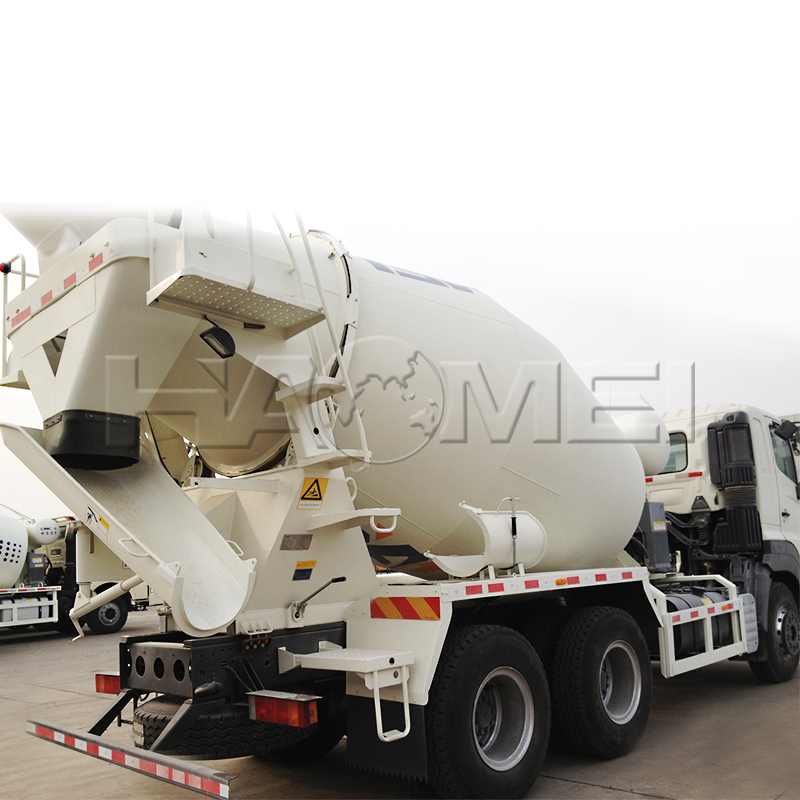
When the HM10-D concrete mixer truck is working, the requirements for the lubrication strength are different due to the position of the moving parts, the relative movement speed, the mechanical load and the thermal load. Let’s take a look at it briefly.
1. Pressure lubrication: The oil pump of cement mixer lorry is used to deliver lubricating oil with a certain pressure to the friction surface for lubrication. This lubrication method is called pressure lubrication.
A. Some parts of the engine with large mechanical load and high relative motion speed are generally used in such lubrication methods, such as: main journal and main bearing, connecting rod journal and connecting rod bearing, camshaft journal and camshaft bearing wait;
B. It is more reliable to use pressure lubrication, but special oil channel must be used to transport lubricating oil.
2. Splash lubrication: Lubricating surfaces are lubricated by lubricating oil droplets or oil mist that are splashed by moving parts or ejected from a special oil hole. This method is called splash lubrication.

A. Some exposed parts on the engine of the concrete truck, parts with low mechanical load or parts with low relative movement speed are generally sprayed, such as piston and cylinder wall, cam and tappet, piston pin and bushing, etc. ;
B. The reliability of splash lubrication is poor, but the structure is relatively simple, and splash lubrication is used between the piston and the cylinder wall;
3. Regular lubrication: Lubricate the friction surface by regularly adding grease. This method is called regular lubrication, such as: water pump bearings, generator bearings, etc.
A. Regular lubrication does not belong to the working category of the lubrication system;
B. Lubrication system is the basic guarantee that the cement mixer truck engine can work normally. Understanding the basic composition and working mode of the lubrication system can help the sweeper driver to better protect concrete mixer truck supply and extend the service life of the car.